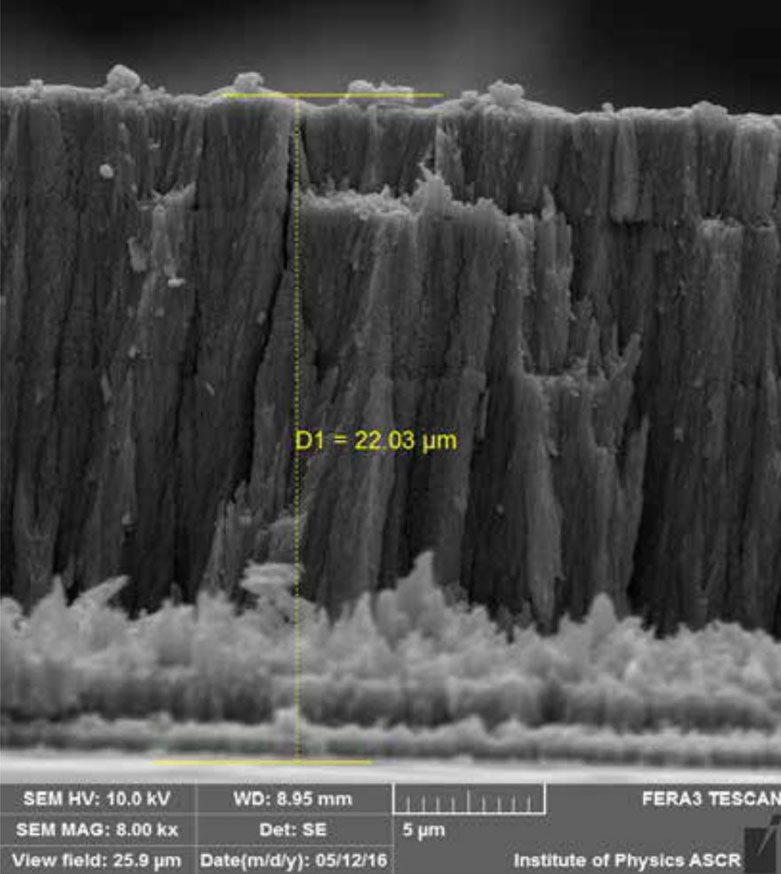The young Czech company IQ Structures s.r.o. from the town of Řež near Prague, in collaboration with the Institute of Physics of the Czech Academy of Sciences and Vietnamese partners, is preparing a revolutionary innovation in the field of nanotechnology. This allows, for example, the production of much higher quality security protection elements against counterfeiting money or documents, as well as application surfaces for the production of hydrogen from water.
“The results of the research enable the company to produce products that are unique in the world and that have high ex-port potential,” said the chairman of TA CR Petr Očko TA. “That is why we supported the project with almost nine and a half million CZK from the DELTA programme. It is aimed at supporting co-llaboration in applied research and experimental development through joint projects of companies and research organizations with significant fore-ign technology and innovation agencies or other similar institutions.”
Magnetron sputtering and chemical deposition methods (solgel) are commonly used these days to apply thin functional layers at an industrial scale. The disadvantage is the low deposition rate and the associated high cost of industrial produ-ction. In the case of chemical methods, it is also difficult to control the parameters of the prepared layers, and it is often necessary to subsequently anneal these layers at high temperatures, which is particularly restrictive in terms of the materials on which these layers are applied. It is also diffi-cult to industrially apply thick oxide layers using the existing methods. The new system develo-ped during the project uses a principle called plasma jets and allows the deposition of thin films – nanostructures – using a more effecti-ve method with substantially reduced costs.
“The main advantages of our proposed system include a high degree of adjustability and con-trol of most of the key parameters of the prepa-red layers, as well as a high deposition rate and the possibility of applying thick oxide layers in the range of micrometres. The developed system allows us to apply layers onto temperature-sensi-tive organic polymeric materials,” explains Tomáš Těthal of IQ Structures.
The practical application of the new tech-nology will enable the massive expansion productively manufactured optics for LED li-ghting, which will dramatically reduce the energy intensity of lighting and enable broad expansion into areas such as lighting of building interiors, lamps and headlights of automobiles etc. Repla-cing classic optics for flat ones will reduce CO2 emissions and material demands both in the pro-duction of the lights and during their use.
Equally important is the use of nanotechnolo-gies to protect against counterfeiting, which is a key factor which prevents counterfeiting and imitation of documents, stamps and products. This will ultimately lead to a reduction in organi-zed crime financing terrorism.
The utilization of innovations during the deve-lopment of technologies related to photocatalysis is very important. Photocatalysis is used, among other things, to produce hydrogen, self-cleaningsurfaces or for cleaning the surrounding envi-ronment. It helps reduce CO2 emissions. It can be used for off-grid systems (which are sources of energy not dependent on the grid), for exam-ple, for the army, vehicles and to reduce our de-pendency on raw materials. “The results of the project significantly accelerate development and ensure the leading position of the Czech Republic in addressing these global issues,” said Petr Očko.
“Our collaboration with Vietnamese partners is important during the implementation of the pro-ject. Doctor Hoang Tung Do is a leading expert in the field of laser absorption spectroscopy, and has a team of experts who studied at prestigious Eu-ropean universities. Participation of his team in the project is therefore very beneficial because it significantly helps us with technological plasma diagnostics,” said Jiří Olejníček of the Institute of Physics.
Another advantage is that the Vietnamese side covers some of the costs, such as for the perfor-mance of certain experiments, and through them we can make contacts with rapidly developing East Asian markets.
Financing of the project by TA CR allowed us to launch full-fledged collaboration with leading Vietnamese sci-entific institutions.




